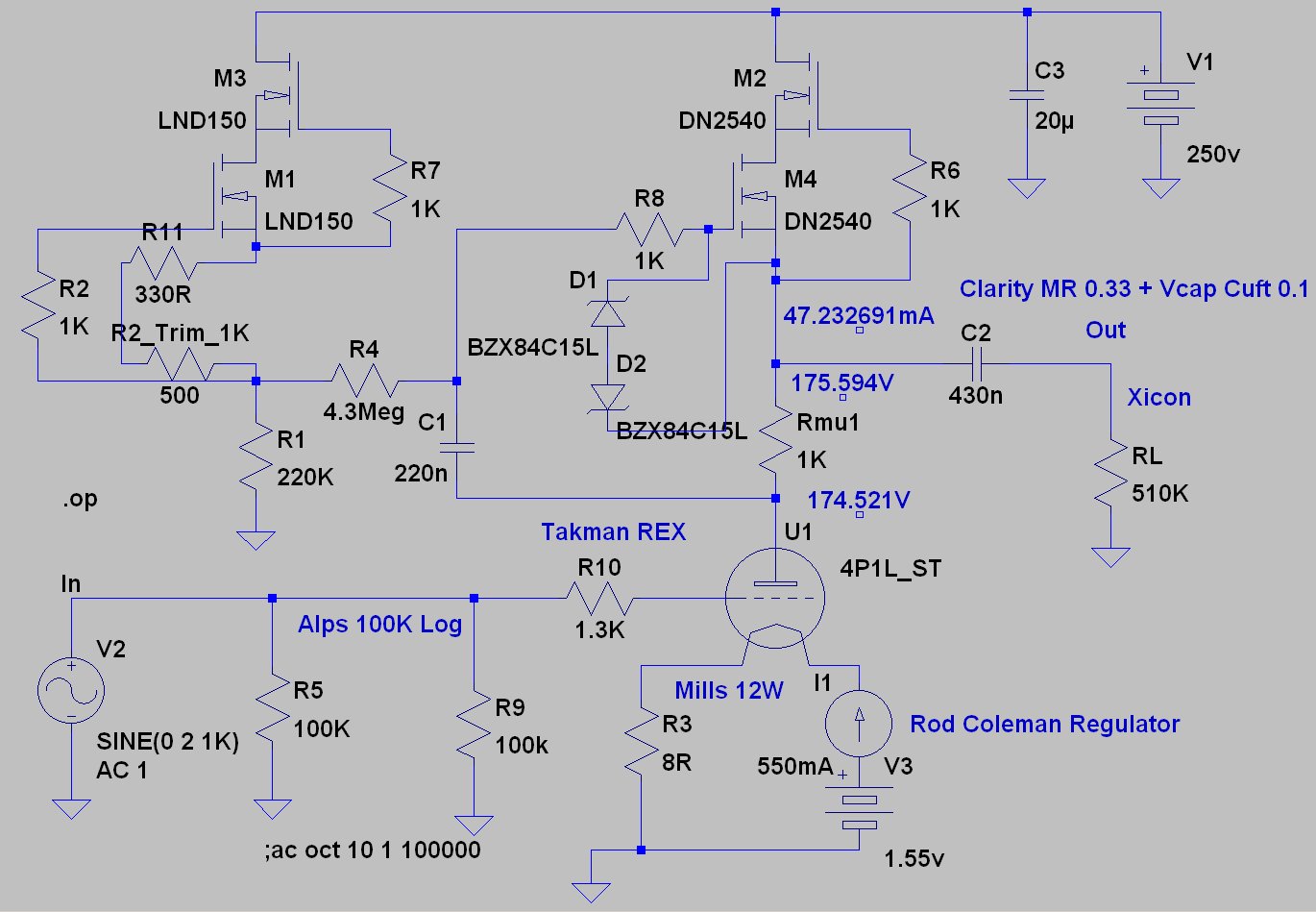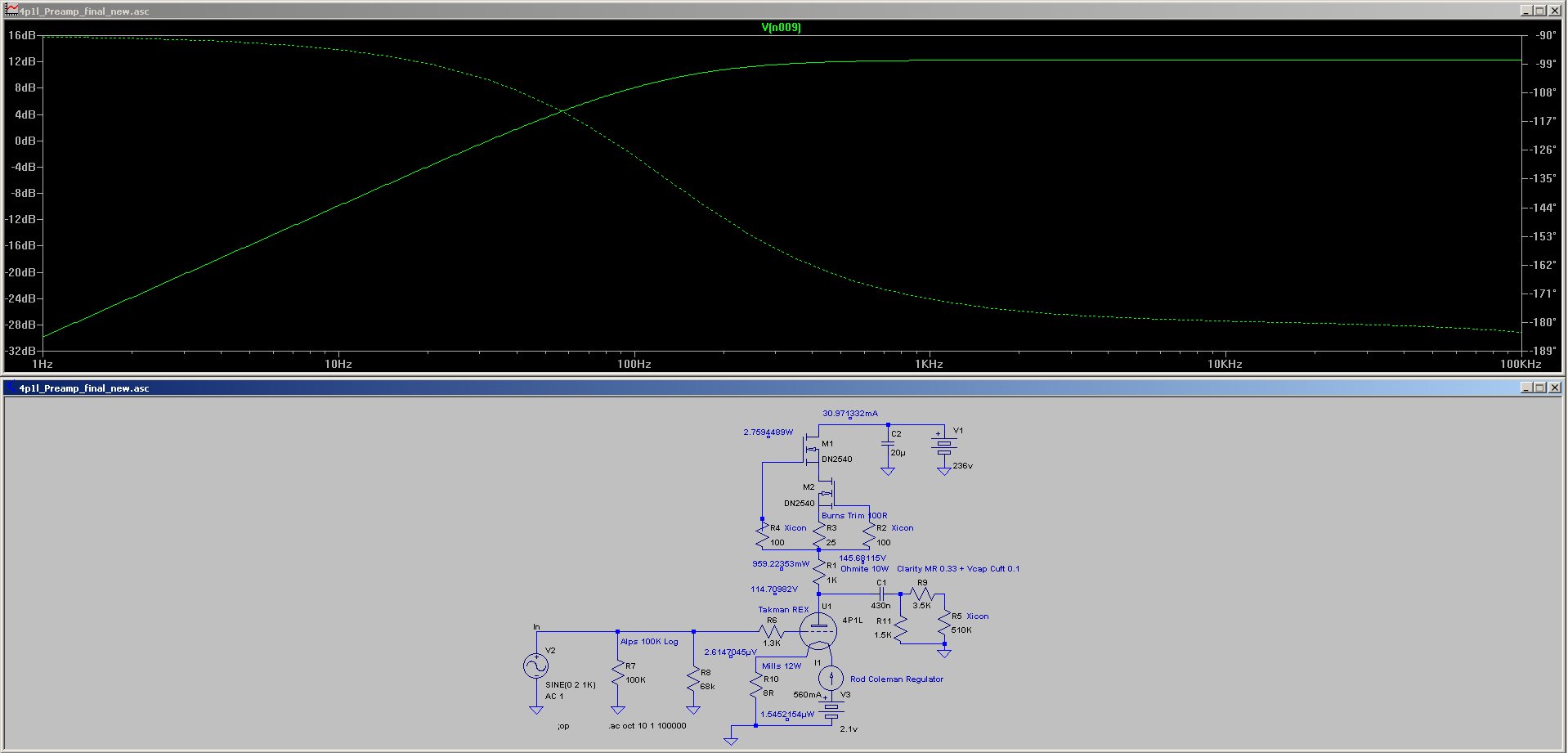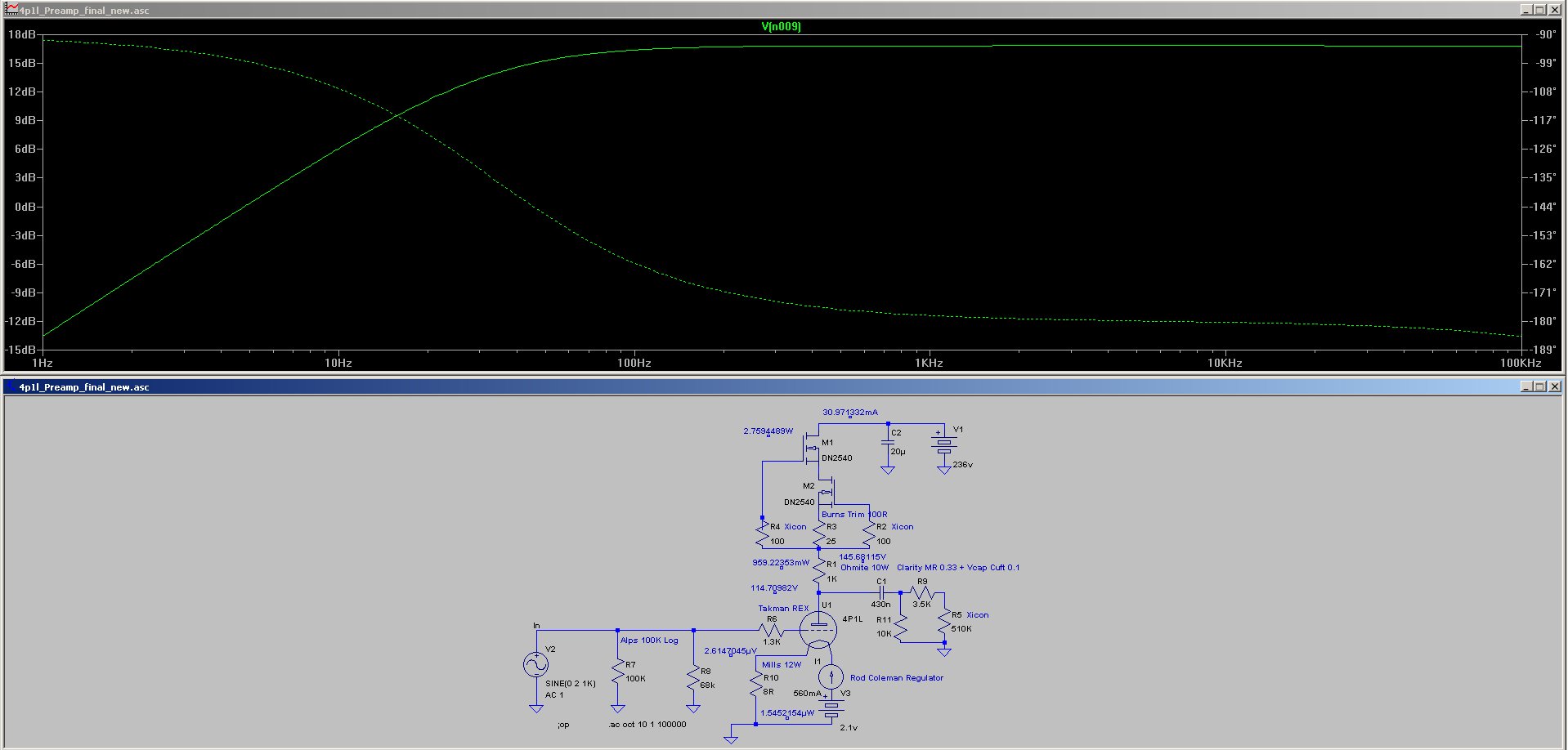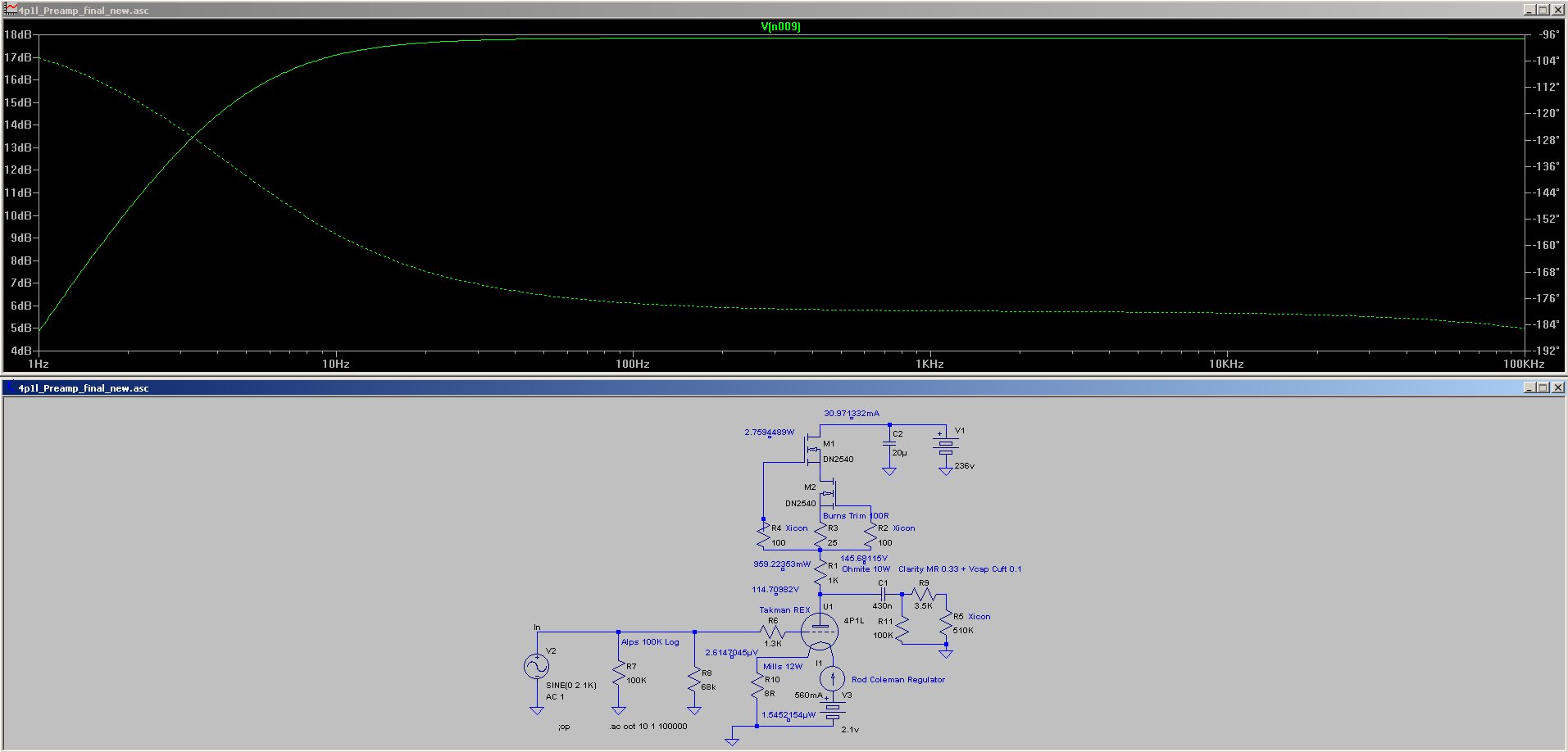The microphonics can be heard if I stand by the speakers and clap my hands, you then hear I kind of tizz sound from the speakers that decays. Also if I listen to music at reasonable but not excessive volume, then at any abrupt pauses in the music I can hear the same decaying sound. I have to say that the linestage sounds quite stunning which is in some ways surprising given the microphonic issue.
Hi Ian.
A couple of Friends and I also have a 4P1L line stage.
Have tried almost anything. I have thick alu 5mm + Brazilian wood IPE + gourmet rubber dampers + Starved Filament Rod Coleman 1.55 volt.
It have helped a lot on the Microphonics but I doubt that it cant be solved for good.
The Barking Dog test, The extensive hand clapping, High frequency Female laughing and as you mention abrupting the music on quite loud
sound levels will trig it.
I just live with it. The sound quality of 4P1L is just amazing.
I have the Cap version (quite expensive caps) + gyrator ver2 , the new one with LND150+DN2540 and I'm not searching anymore for something else regards a line stage.
If I should try something else , It would be the 4P1L PSE as Andy has build, but I think it's over my technical stills to build one.
Michael.
Michael I tried in my 26 linestage using SSHV2 only resistor plate load without LL1660 & was a lot of microphonics & noise but when connected again the LL1660 all the microphonics gone.
Felipe
Merry Xmas for all people.
Felipe
Merry Xmas for all people.
Last edited:
Michael I tried in my 26 linestage only resistor plate load without LL1660 & was a lot of microphonic but when connected again the LL1660 all the microphonics gone.
Felipe
Merry Xmas for all people.
Hi Felipe.
I think that 4P1L is a more difficult beast regards microphonics.
Again I like the sound so much, so I don't complain at all.
Michael
I'm in preparation for my 4P1L built and on the look for shock absorbers.
So far I've found those:
Microphone Shock Mount
Secraft vibration damper
Anti Vibration mount
A combination of those with a lot of mass (2-3cm MDF) should be good 🙂
So far I've found those:
Microphone Shock Mount
Secraft vibration damper
Anti Vibration mount
A combination of those with a lot of mass (2-3cm MDF) should be good 🙂
I use these
An externally hosted image should be here but it was not working when we last tested it.
Model aircraft flying silent blocks for servo M3
where can those blocks be purchased?
I bought in a local model RC/aircraft/etc store you can ask for Futaba servo silent blocks but you can buy:
IberHobby
Accesorios servos futaba - - Silent Block cuadrado servo
IberHobby
Accesorios servos futaba - - Silent Block cuadrado servo
Some really interesting responses. From what I have read it seems to me that the step-down nature of the LL1660 is at least partially responsible for the reduction in microphonics and it might be this drop in microphonics that accounts for why people like this option (as well as the inherent issues of choosing the right coupling capcitor).
As I stated in a previous post that when I put an attenuator after the capacitor it drastically (I mean massively reduced the microphonic problem). I absolutely agree with the post that that mentioned that having the potential divider on the output of the pre-amp will reduce its ability to drive difficuly loads. However, I reckon everthing is a trade-off and assuming the load to be driven is not to difficult then attenuation can be a method to tame the microphonics of this stunning sounding tube.
Currently I have a Kiwame 3.5K resistor from the capacitor to the output and a 1.5K from output signal to ground. I used these values as they were in my spares box and similar to those used in the Tram-2. Previously I experimented with higher values and concluded that whilst the microphonics were massively reduced there was also a loss of micro-dynamics that made the trade-off wrong. However, with the 3.5K and 1.5K, the dynamics are back, and the microphonics are gone. So I may be close to finding the best values for my system. Incidentally the pre-amp is driving 1M long interconnects into a clone of a Thorsten's 300B Legacy power-amp (C3M pentode driving a 300B).
Given the ease of making the experimental change I would be very interested to hear of anybody elses comments after trying the attenuation mod.
By the way do also agree that it is vital to make all effort to build the preamp in such a way as to reduce microphonics. It's just I think that some people may give up on this beautiful sounding tubes because of the microphonics issue.
Cheers
Ian
As I stated in a previous post that when I put an attenuator after the capacitor it drastically (I mean massively reduced the microphonic problem). I absolutely agree with the post that that mentioned that having the potential divider on the output of the pre-amp will reduce its ability to drive difficuly loads. However, I reckon everthing is a trade-off and assuming the load to be driven is not to difficult then attenuation can be a method to tame the microphonics of this stunning sounding tube.
Currently I have a Kiwame 3.5K resistor from the capacitor to the output and a 1.5K from output signal to ground. I used these values as they were in my spares box and similar to those used in the Tram-2. Previously I experimented with higher values and concluded that whilst the microphonics were massively reduced there was also a loss of micro-dynamics that made the trade-off wrong. However, with the 3.5K and 1.5K, the dynamics are back, and the microphonics are gone. So I may be close to finding the best values for my system. Incidentally the pre-amp is driving 1M long interconnects into a clone of a Thorsten's 300B Legacy power-amp (C3M pentode driving a 300B).
Given the ease of making the experimental change I would be very interested to hear of anybody elses comments after trying the attenuation mod.
By the way do also agree that it is vital to make all effort to build the preamp in such a way as to reduce microphonics. It's just I think that some people may give up on this beautiful sounding tubes because of the microphonics issue.
Cheers
Ian
Some really interesting responses. From what I have read it seems to me that the step-down nature of the LL1660 is at least partially responsible for the reduction in microphonics and it might be this drop in microphonics that accounts for why people like this option (as well as the inherent issues of choosing the right coupling capcitor).
As I stated in a previous post that when I put an attenuator after the capacitor it drastically (I mean massively reduced the microphonic problem). I absolutely agree with the post that that mentioned that having the potential divider on the output of the pre-amp will reduce its ability to drive difficuly loads. However, I reckon everthing is a trade-off and assuming the load to be driven is not to difficult then attenuation can be a method to tame the microphonics of this stunning sounding tube.
Currently I have a Kiwame 3.5K resistor from the capacitor to the output and a 1.5K from output signal to ground. I used these values as they were in my spares box and similar to those used in the Tram-2. Previously I experimented with higher values and concluded that whilst the microphonics were massively reduced there was also a loss of micro-dynamics that made the trade-off wrong. However, with the 3.5K and 1.5K, the dynamics are back, and the microphonics are gone. So I may be close to finding the best values for my system. Incidentally the pre-amp is driving 1M long interconnects into a clone of a Thorsten's 300B Legacy power-amp (C3M pentode driving a 300B).
Given the ease of making the experimental change I would be very interested to hear of anybody elses comments after trying the attenuation mod.
By the way do also agree that it is vital to make all effort to build the preamp in such a way as to reduce microphonics. It's just I think that some people may give up on this beautiful sounding tubes because of the microphonics issue.
Cheers
Ian
Hi Ian. A really nice observation. Will like to try it but I'm not quite
certain If it have other impacts. 🙂
Not a fully updated schematic but quite was I have right now..

Wouldn't the 1.5K Resistor from output to ground, change things regards my Zout. Just asking because I doesn't know better.
/Michael.
Hi Michael, I am also unsure on how to calculate the Zout, I just tried it. I will be very interested to hear how you think it sounds.
Thanks for posting your schematic. I was going to try that ccs, but the schematic I have doesn't have the protection zener diodes shown. So it is useful to see rather than me try and work it out.
Cheers
Ian
Thanks for posting your schematic. I was going to try that ccs, but the schematic I have doesn't have the protection zener diodes shown. So it is useful to see rather than me try and work it out.
Cheers
Ian
Hello Ian
just tried to mount resistor,like you have
2.5k shinko in serie..and 2.2k to ground
the effekt is just the same as in the Tram2,,lesser noise and microfoni..but also lesser gain
for the sound,,,not shure if it is as good as before...must have more hours to listen
i can not get free off highfreqent noise ...but i have maybe something to do with my power amp,,,only 1,5v to full power,,10k impedans,,,207cm tall linearray..
the effekt of the resistor in output,,give some of the same effekt like my lundahl trafo does--but it also give lesser gain
as i sit and write this i listen to music..and i will say it seems like the bass is softer..more trafo like,,,,hmmm i am not shure if this i good
best bjarne
just tried to mount resistor,like you have
2.5k shinko in serie..and 2.2k to ground
the effekt is just the same as in the Tram2,,lesser noise and microfoni..but also lesser gain
for the sound,,,not shure if it is as good as before...must have more hours to listen
i can not get free off highfreqent noise ...but i have maybe something to do with my power amp,,,only 1,5v to full power,,10k impedans,,,207cm tall linearray..
the effekt of the resistor in output,,give some of the same effekt like my lundahl trafo does--but it also give lesser gain
as i sit and write this i listen to music..and i will say it seems like the bass is softer..more trafo like,,,,hmmm i am not shure if this i good
best bjarne
Hi Ian...
The Other Danes has just joined the 3.5K 1.5K tweak, and Microphonic is TOTALLY
GONE.
Haven't got a Dog but I can scream, clap do anykind of insane things NONE..
Gain is reduced alot, but not a big issue here on my Setup.
Sound Quality is absolute acceptable still a lot of magic intact.
PS! Ian is it the 1.5K which is reducing the GAIN the most or both ???
/Thanks Michael.
The Other Danes has just joined the 3.5K 1.5K tweak, and Microphonic is TOTALLY
GONE.
Haven't got a Dog but I can scream, clap do anykind of insane things NONE..
Gain is reduced alot, but not a big issue here on my Setup.
Sound Quality is absolute acceptable still a lot of magic intact.
PS! Ian is it the 1.5K which is reducing the GAIN the most or both ???
/Thanks Michael.
Last edited:
hope not it is wrong to link to the Tram2 manual,,there you can see how the Tram use different output
http://www.diyhifisupply.com/files/Tram2R1.36.pdf
http://www.diyhifisupply.com/files/Tram2R1.36.pdf
hope not it is wrong to link to the Tram2 manual,,there you can see how the Tram use different output
http://www.diyhifisupply.com/files/Tram2R1.36.pdf
Nope instead it's quite useful. For me it seems the it's the 1.5K which
alter the output i dB.
I'll try to play a little around with the values. Might need a little more gain, when playing very quiet recordings...
I would say the 4p1l is less microphonic as 26 tube! In both configurations I used output transformers!
But my current setup uses the LL1671 as step down fed into intact audio autoformer...I have very little noise at the max volume levels. But I tried the autoformers also at the input and there was also no noise or microphony! Its just that this arrangement sounds the best to me...I think the 4p1l needs some voltage to swing to be able to shine at max....
Otherwise I never tried the 4p1l OTL gyrator or mu follower but I guess its more bright sounding and in some systems this can be a missing factor and misleading people to hear more open sound!!!
I encourage everyone to try LL1671!!! Great match to 4p1l!!!
But my current setup uses the LL1671 as step down fed into intact audio autoformer...I have very little noise at the max volume levels. But I tried the autoformers also at the input and there was also no noise or microphony! Its just that this arrangement sounds the best to me...I think the 4p1l needs some voltage to swing to be able to shine at max....
Otherwise I never tried the 4p1l OTL gyrator or mu follower but I guess its more bright sounding and in some systems this can be a missing factor and misleading people to hear more open sound!!!
I encourage everyone to try LL1671!!! Great match to 4p1l!!!
Hi.
No one rides for free. The 3.5K 1.5K tweak has it price. After 1 hour I realized that
something was different.
My bass was quite weak compared to before.
I have used the first old Spice simulation, because I don't have simulation which are
useful since I upgraded to the new fantastic gyrator 1b.
Running with a 10K now, but I also have the microphonics back.
Frequence range with 1.5K

Frequence range with 10K

Frequence range with 100K

Best Michael.
No one rides for free. The 3.5K 1.5K tweak has it price. After 1 hour I realized that
something was different.
My bass was quite weak compared to before.
I have used the first old Spice simulation, because I don't have simulation which are
useful since I upgraded to the new fantastic gyrator 1b.
Running with a 10K now, but I also have the microphonics back.
Frequence range with 1.5K

Frequence range with 10K

Frequence range with 100K

Best Michael.
Last edited:
- Home
- Amplifiers
- Tubes / Valves
- 4P1L DHT Line Stage
![WP_20151226_001[1].jpg](/community/data/attachments/482/482589-5968767627103b66adb9b5f936670cad.jpg?hash=WWh2dicQO2)